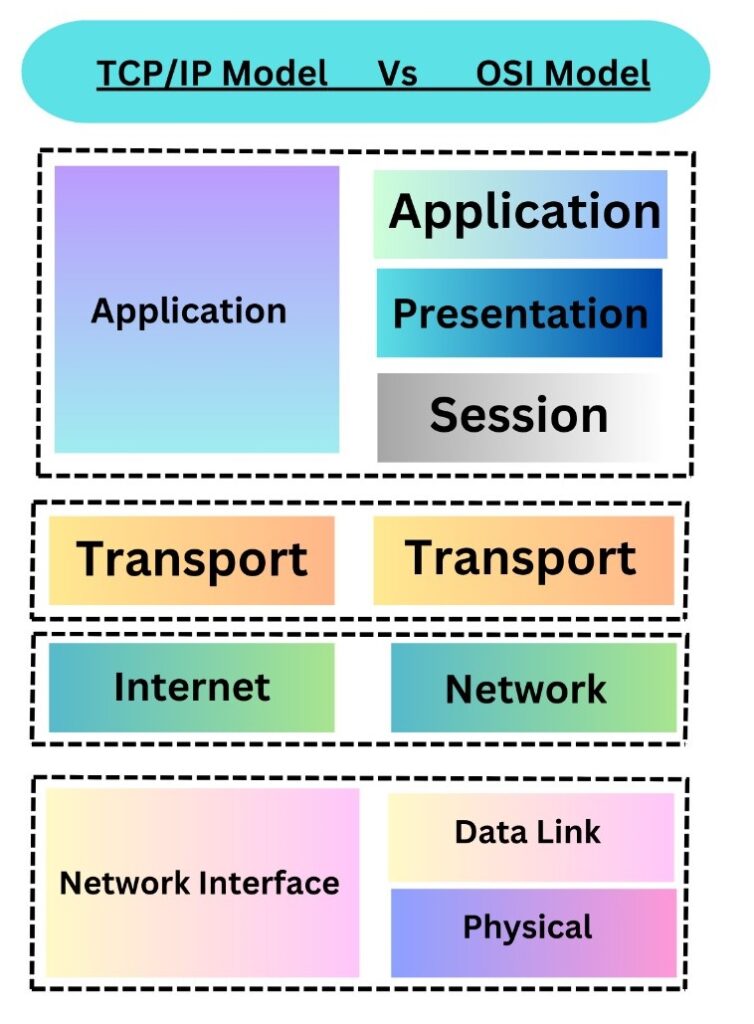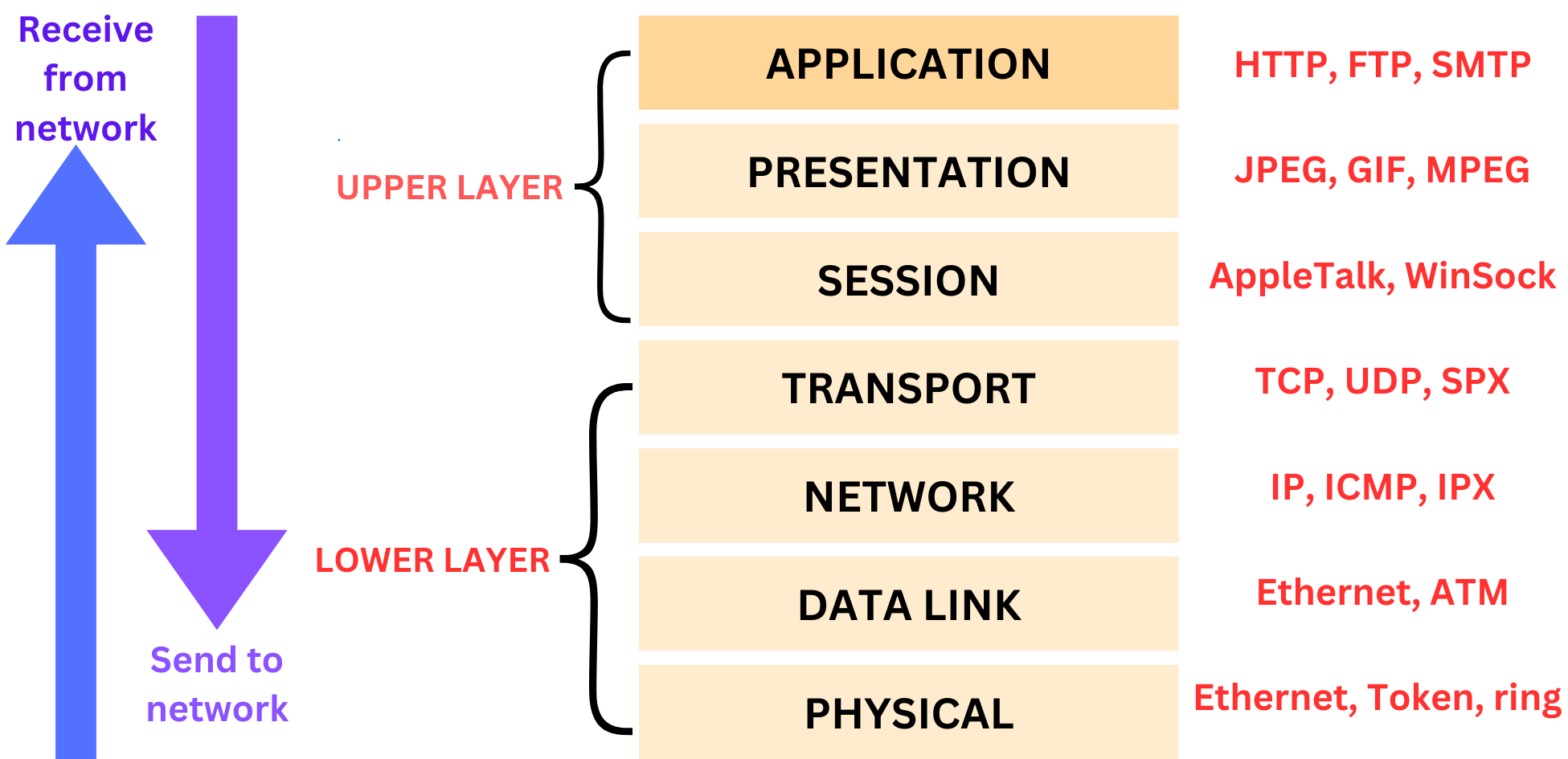Computer network में TCP model क्या हैं?
TCP/IP (Transmission Control Protocol/Internet Protocol) model एक conceptual framework है जिसका उपयोग modern internet और computer network में उपयोग किए जाने वाले communication protocol के suit का description करने के लिए किया जाता है। यह एक layered model है, जहां प्रत्येक layer के specific tasks और Responsibilities होती हैं। TCP/IP Model में four layers होती हैं, और यहां प्रत्येक layer का detailed explanation नीचे दिया गया है:

Application Layer
- यह layer direct applications या software processes के साथ interact करती है।
- यह उन protocol और services को handle करता है जो application के लिए specific हैं, जैसे web browsing के लिए HTTP (hypertext transfer protocol), file transfer के लिए FTP (File Transfer Protocol), E-mail के लिए SMTP (Simple Mail Transfer Protocol), और कई अन्य।
- Application layer specific application आवश्यकताओं के आधार पर Data formatting, encryption और compression के लिए ज़िम्मेदार है।
Transport Layer
- transport layer विभिन्न host पर applications के बीच Reliable end-to-end communication सुनिश्चित करती है।
- यह segmentation, flow control और error correction को handle करता है।
- इस layer पर two main protocols operated होते हैं:
- TCP (Transmission Control Protocol): error recovery, flow control और data partition जैसी सुविधाओं के साथ विश्वसनीय, कनेक्शन-उन्मुख संचार प्रदान करता है।
- यूडीपी (उपयोगकर्ता डेटाग्राम प्रोटोकॉल): त्रुटि पुनर्प्राप्ति या प्रवाह नियंत्रण तंत्र के बिना अविश्वसनीय, कनेक्शन रहित संचार प्रदान करता है।
Internet Layer
- यह layer network पर data packet के logical addresses और routing के लिए जिम्मेदार है।
- इस layer पर Primary Protocol IP (Internet Protocol) है, जो data packet की structure को define करता है और addressing और routing को handle करता है।
- IP networking को सक्षम करते हुए data को कई networks में broadcast करने की permission देता है।
- अन्य protocols जैसे ICMP (Internet Control Message Protocol) और IGMP (Internet Group Management Protocol) भी इसी layer पर work करते हैं।
Network Access Layer (or Link Layer)
- यह परत physical medium पर data distribution के तरीकों को defined करने के लिए जिम्मेदार है।
- यह Framing, addressing (physical addressing, logical addressing नहीं) और local network level पर error का पता लगाने/सुधार जैसे details को संभालता है।
- इस layer पर general protocol में wired network के लिए ethernet और wireless network के लिए Wi-Fi शामिल हैं।
- यह layer Media Access Control (MAC) Addressing और physical signaling को भी handle करता है।



